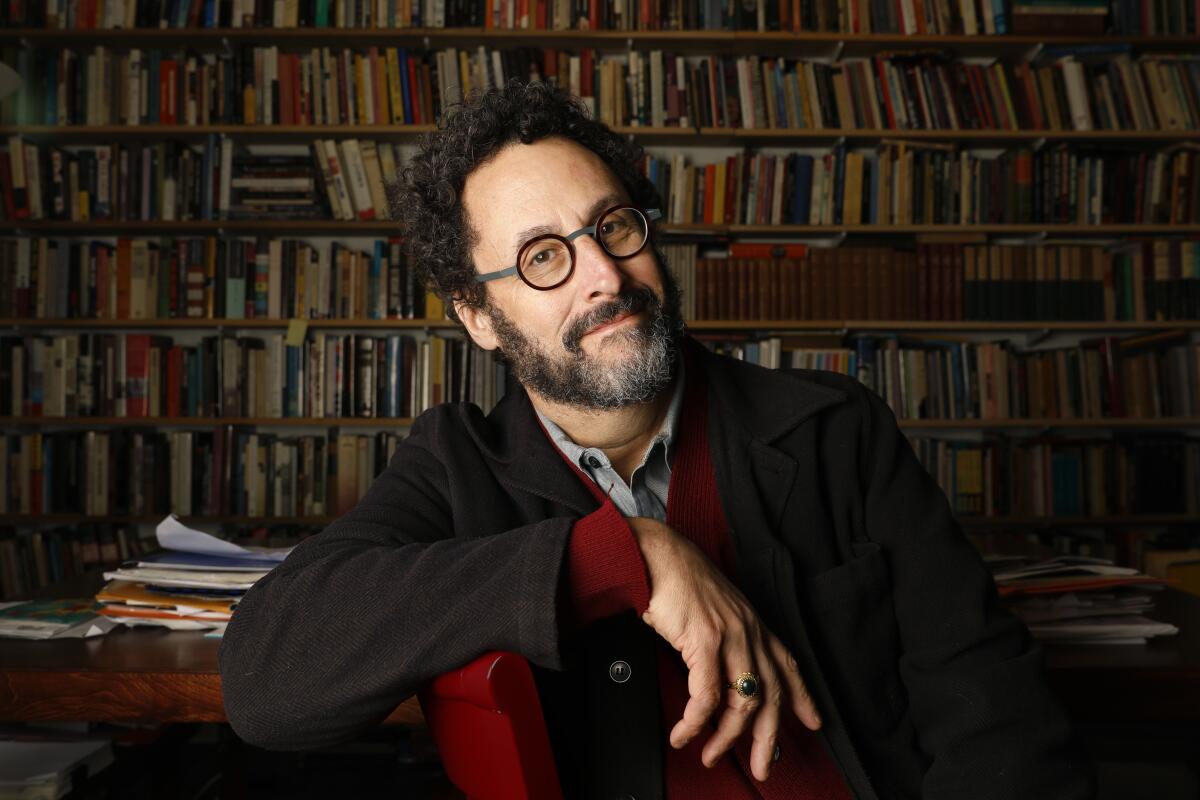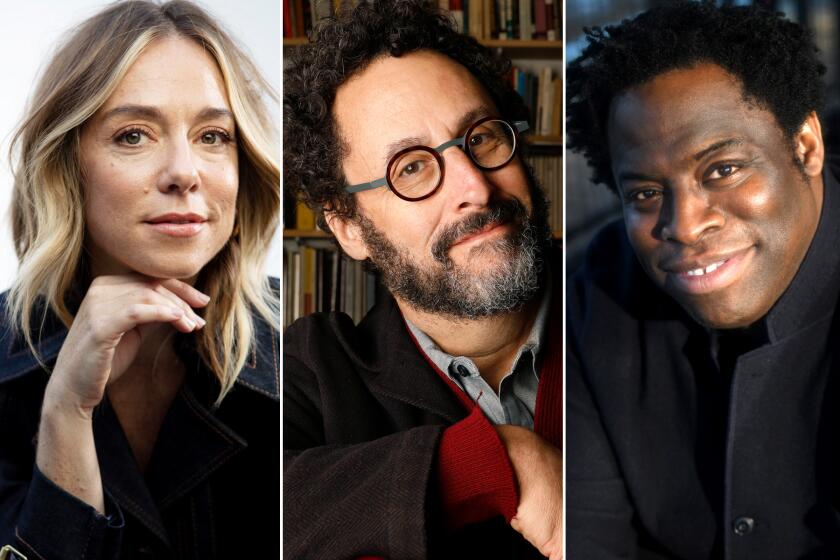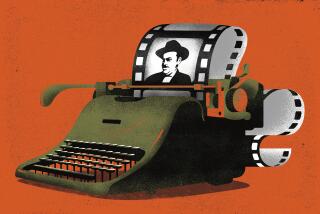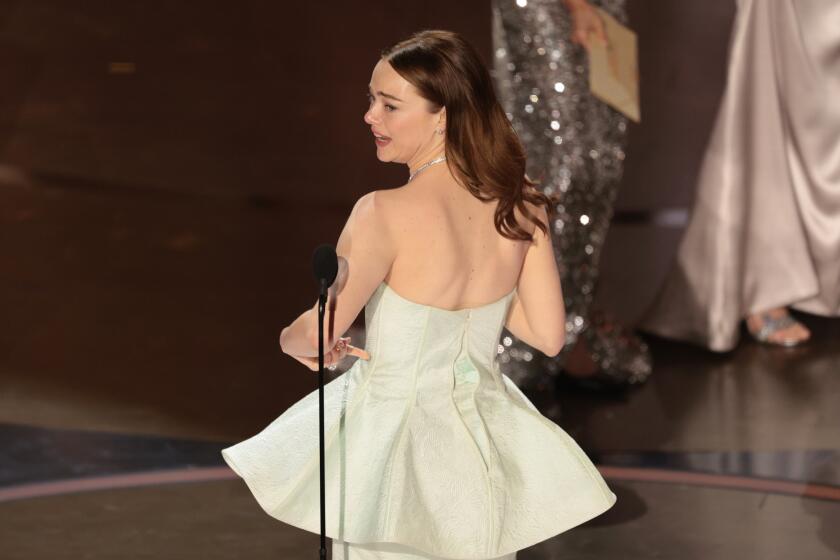How Steven Spielberg scared Tony Kushner into tackling ‘West Side Story’

Each time Steven Spielberg asks me to write for him, I find myself doing something I’ve never done before. For “Munich,” I had to figure out how to write extended action sequences, a skill they don’t teach you in playwriting school. Under Steven’s guidance, I eventually found those car chases and gun fights and conflicts exhilarating to write and upsetting in the way I want to be upset when I’m working. The screenplay for “Lincoln” required distilling Doris Kearns Goodwin’s 800-page “Team of Rivals” into a feature-length script. My first draft was 500 pages. Six years and eight drafts later, I had gotten it to 150 pages — shorter than “Munich”!
When Steven asked me to write the screenplay for a new version of “West Side Story,” he invited me to a feast of formidable challenges. I love “West Side Story,” I always wanted to work with Stephen Sondheim, and I’ve come to realize that my writerly self-respect is tangled up in scaring myself. I had never written the book for a big screen musical, and a cherished classic at that. So how could I say no?
When I called Sondheim, he reminded me that I’d always insisted I didn’t want to write a book for a musical. Maybe, he suggested, I finally got what he had tried several times to explain to me: Musicals, like films, are intensely collaborative, and a book writer provides the structure that makes it possible for the various artists — writer, composer, lyricist, choreographer and director — to work with a single purpose in telling a story. It’s what Arthur Laurents had done when he condensed Shakespeare’s five-act tragedy [“Romeo and Juliet”] into a two-act narrative that made space for 11 yet-to-be-written songs and several extended dance sequences for the 1961 version.
I began to understand that my task was basically the same as that faced by every writer: to figure out the bare-bones structure of a world, to assemble the topography that rests upon it, and then to populate it. Armed with this job description, I stopped regarding Leonard Bernstein’s and Sondheim’s magnificent score as a string of immortal, immutable moments I had to connect with dialogue. Instead, I felt I had permission to dig into every corner of “West Side Story,” to write not around but alongside and through its songs and dances, treating them as continuations of the plot and the characters’ journeys — essentially what I’d learned to do from the action sequences in “Munich.”
Steven and I had no desire to make changes merely for the sake of making changes, and we wanted to avoid alterations that would betray the musical’s spirit and soul. But I felt it would be possible to “complexify” and deepen the story by fleshing out the lives of the characters, making some changes in the song order, setting some songs in new locations and even, in a couple of instances, altering which characters would sing them.
In their own words: Tony Kushner, Rebecca Hall, Jeymes Samuel and other screenwriters take us on a journey through writing their film scripts.
For example, I wanted to specify that Bernardo had become a local hero, a neighborhood star. While I was reading about Puerto Rican boxers in the 1950s, a couplet from “America” came into my head: “Life can be bright in America / If you can fight in America,” along with the percussive beats in the music intended to simulate punching. So Bernardo became a boxer.
I wanted to know more about Bernardo’s friend Chino, who becomes María’s shy, awkward suitor and then Bernardo’s avenger. So I wrote a scene in which we learn that Bernardo admires Chino’s brains and won’t allow him to fight. In the dance at the gym, toward the end of the mambo section, there’s a musical passage that struck me as reckless and goofy. I thought it would be a perfect moment for Chino to risk embarrassing himself by taking to the dance floor to impress María.
It seemed to me that Tony ought more to resemble the other Jets, especially Riff. In our version, Tony is striving to break with his tough, violent past. His first song, “Something’s Coming,” is a beautiful, hopeful soliloquy, but Sondheim’s lyrics have an ambiguous depth; they’re a succession of tentative dreams that commence with a question: “Could be, who knows?” The song ends on a note of qualified, unassertive optimism, as Tony sings “Maybe tonight …” To underscore this division between hope and doubt, I made the song Tony’s response to Valentina, the widow of the original owner of the drugstore, who’s Tony’s boss and his benefactor and the one major character I invented. Her presence gives Tony a new reason, a new need to sing the song.
I moved “America” from the nighttime rooftop where it was set in the 1961 film to the morning streets of San Juan Hill; it’s a debate about racism, discrimination and economic opportunity that comes to include the entire community. Gimbel’s department store became the setting for “I Feel Pretty,” which we restored to its original position after the rumble, where the joy María is announcing gains a terrible poignancy.
In our version, María and Tony exchange vows and sing “One Hand, One Heart” at the Cloisters Museum, one of my favorite places in New York, where modern-day lovers can take a subway to the medieval world of Romeo and Juliet. I asked Steven if we could give “Somewhere,” sung by Tony and María in the film and by a dream character in the original musical, to Rita Moreno. I knew she’d make audiences hear the song’s longing for a better world and its undercurrent of grief that that world has not yet arrived. And I changed “Cool” to deepen the conflict between Riff and Tony, and to give a place of prominence to the story’s ultimate instrument of tragedy, the gun.
“West Side Story” has the mysterious capacity of most great works of dramatic art — it offers room for transformation while remaining its unmistakable self. One of the reasons Steven wanted to make this movie, and a reason I was thrilled to join him, was the opportunity to show our love for the musical by looking at it from a new angle, to bring it to life for people who have never seen it before, and to bring it to new life for people who have.
More to Read
From the Oscars to the Emmys.
Get the Envelope newsletter for exclusive awards season coverage, behind-the-scenes stories from the Envelope podcast and columnist Glenn Whipp’s must-read analysis.
You may occasionally receive promotional content from the Los Angeles Times.







